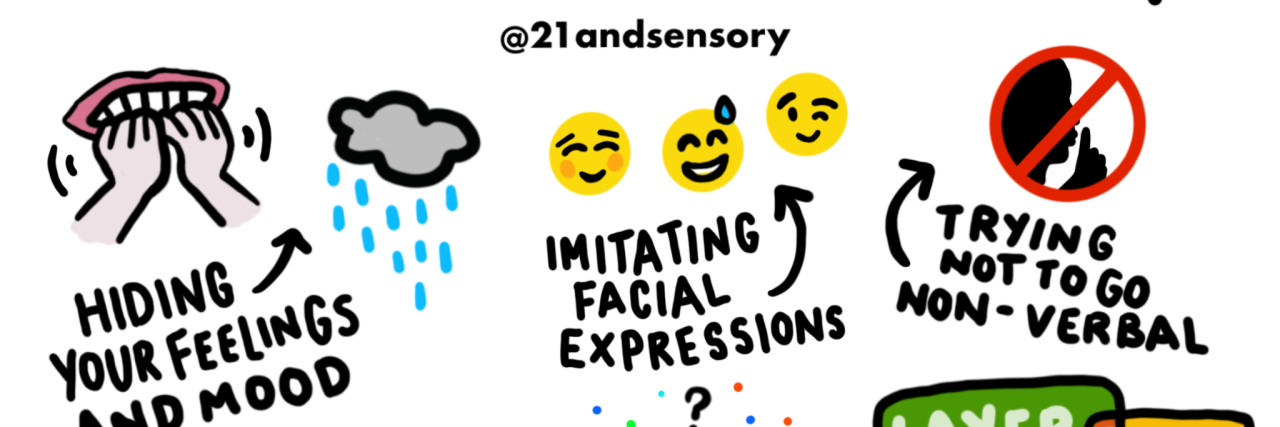Why My Experiences With Autistic Masking Inspired Me to Create This Graphic
I decided to create an illustration based on masking as it’s something I personally struggle with as someone with sensory processing disorder and autism.
So what actually is masking?
Masking involves trying to hide being autistic so others will accept us. It is also sometimes referred to as camouflaging. This means we act in ways that other people will think we are “normal” and to try and be accepted socially. My illustration includes a few examples of trying to mask.
Over the course of my life I feel I have perfected the art of masking, which isn’t necessarily a good thing. I am extremely good at withholding my feelings and emotions, bottling them up until I get home. For example, I would cry when I had to go to primary school each morning. Then speed forward a bit in time and I’d come home from secondary school each day very tearful. I even used to go and cry in the disability support room at break and lunch times because secondary school is quite literally THE most overwhelming place I have ever had to cope in. But slowly through sixth form and university I began to build up a resilience to the world and although I still get overwhelmed I can always come home, have a bit of a sensory meltdown (and a good cry) then move on with things.
I don’t think I really realized how much I was masking in everyday life until I began taking steps to have an autism assessment (I was diagnosed at age 25). Over the course of my teenage and adult life I have become an expert in mimicking, mirroring and analyzing other people and their behavior in order to fit in. I’ve learned to suppress my feelings and need to potentially “stim” — a way of self regulating through movement or through using distractions such as fidget toys, etc. As a result of these learned behaviors it can be very hard not to mask and it’s difficult to “drop” the mask when around understanding people such as family and close friends.
My mood can change so quickly if I am overwhelmed by something as I cannot filter the information coming into my brain and I cannot regulate my emotions or understand and label my own feelings. (I was told by my autism assessor that this is referred to as alexithymia). This means day-to-day it can be quite tiring being out in the world and as a result I’ve become very good at masking (hiding my true thoughts/feelings) and I can only really drop that mask when I am in a safe environment like my home.
I think if I was to sum up having to mask a lot I would say it can be very draining. I think females are very good at “masking,” which is having to actively hide your own autistic traits and struggles and what’s really going on inside. Now that’s not to say that other genders aren’t good at masking but I honestly believe that a lot of females go under the radar because they have become experts in burying their struggles and keeping up a so-called “normal” appearance both emotionally and physically.
Socializing will always be hard for me and I think I will always cope with the world through masking how I really feel. But that’s OK. I have to actively remind myself that “normal” isn’t real. Masking is a method of coping with the everyday and just trying to get by. To go out in the world and just exist is a huge thing.
Images via @21andsensory

